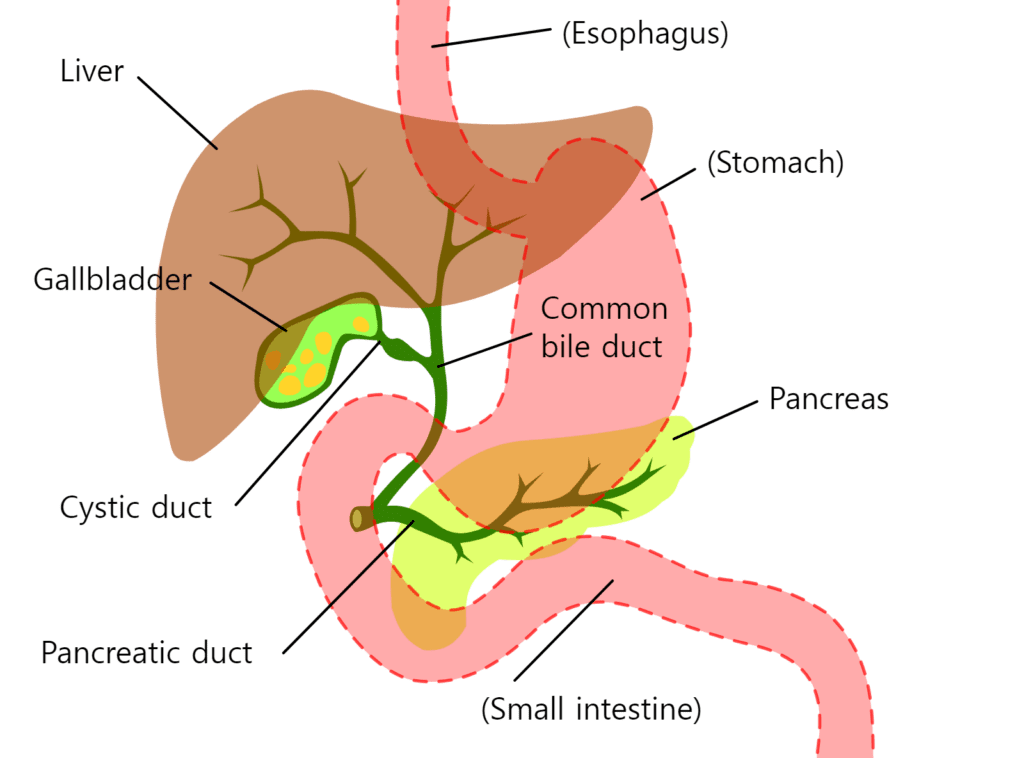PTBD is useful minimal invasive technique for bile drainage
but when the patient’s bile duct is not dilated, the procedure gets really difficult
Since nondilated bileduct is not well visualized on ultrasound, multiple puncture through the liver is needed than usual which makes the patient feel severe pain (even with enough local anesthesia) and makes the physician exhausted.
Recently, My professor introduced his way to puncture of nondilated bile duct for biliary drainage. In my thought, the method is very useful. So I want to introduce the method for IR doctors who are suffering from nondilated bile ducts…
Let’s strat

Bile is produced by liver and it is stored in gall bladder and when one eats, cholecystokinin which releases from stomach stimulates gall bladder to secrete bile into duodenum. You can easily recognize that cystic duct is connected with common bile duct. This is the key, when the patient fasts for 6 hours, gall bladder gets bigger due to stored bile. And physician can easily recognize the gall bladder on ultrasound.
which means, puncture of gall bladder is very easy.




(5) with 0.018″ microGW, we inserted yellow sheath.
(6) with yellow sheath inserted in bile duct, 0.035″ regular GW (Terumo) was inserted through the sheath.

It’s very easy way to insert bile duct drainage catheter to nondilated bile duct. but this method can only be used to patient without cholangitis. If the patient has cholangitis, this method can make cholangitis worse.
2023-07-16